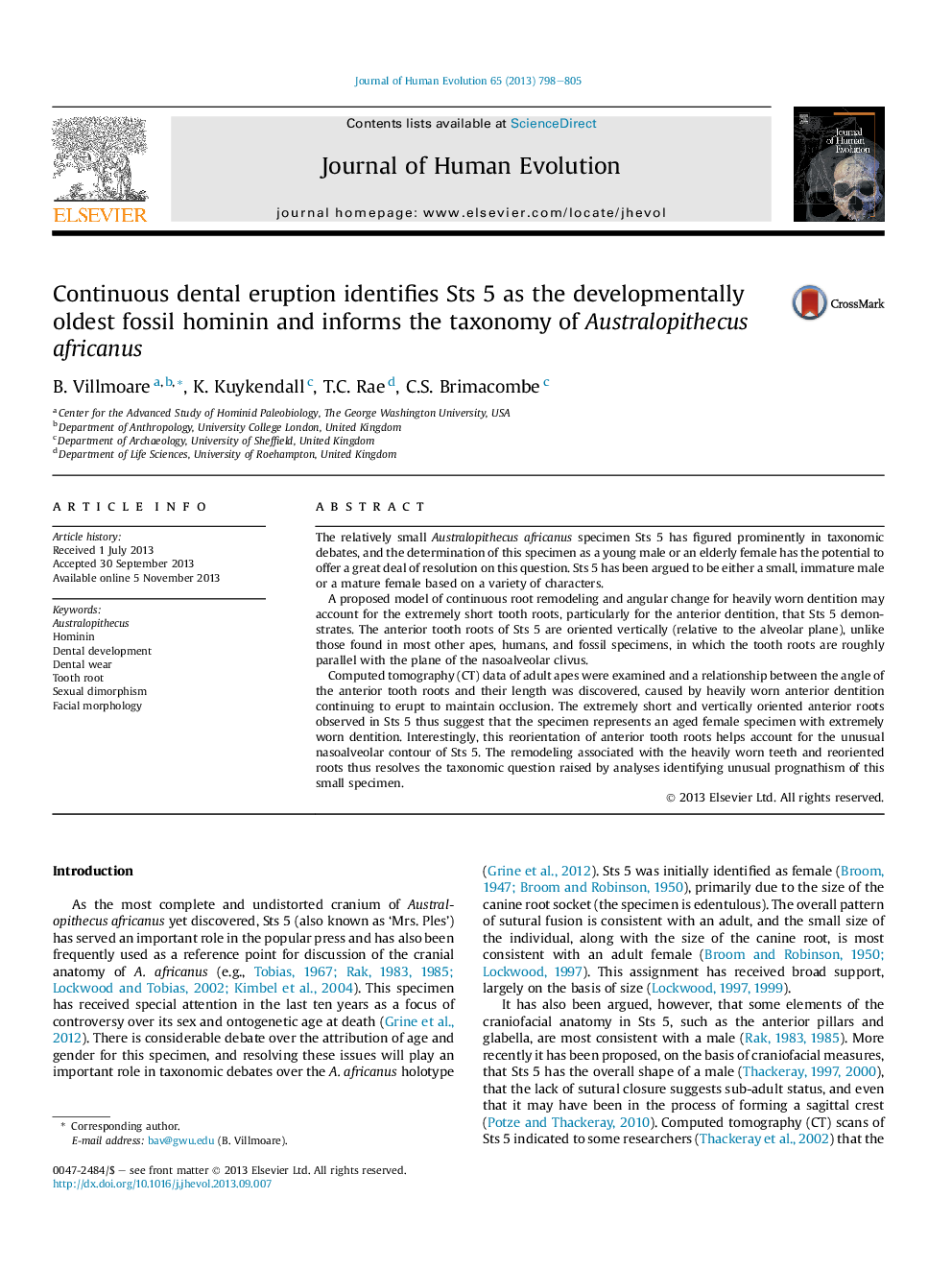| Article ID | Journal | Published Year | Pages | File Type |
|---|---|---|---|---|
| 4556236 | Journal of Human Evolution | 2013 | 8 Pages |
The relatively small Australopithecus africanus specimen Sts 5 has figured prominently in taxonomic debates, and the determination of this specimen as a young male or an elderly female has the potential to offer a great deal of resolution on this question. Sts 5 has been argued to be either a small, immature male or a mature female based on a variety of characters.A proposed model of continuous root remodeling and angular change for heavily worn dentition may account for the extremely short tooth roots, particularly for the anterior dentition, that Sts 5 demonstrates. The anterior tooth roots of Sts 5 are oriented vertically (relative to the alveolar plane), unlike those found in most other apes, humans, and fossil specimens, in which the tooth roots are roughly parallel with the plane of the nasoalveolar clivus.Computed tomography (CT) data of adult apes were examined and a relationship between the angle of the anterior tooth roots and their length was discovered, caused by heavily worn anterior dentition continuing to erupt to maintain occlusion. The extremely short and vertically oriented anterior roots observed in Sts 5 thus suggest that the specimen represents an aged female specimen with extremely worn dentition. Interestingly, this reorientation of anterior tooth roots helps account for the unusual nasoalveolar contour of Sts 5. The remodeling associated with the heavily worn teeth and reoriented roots thus resolves the taxonomic question raised by analyses identifying unusual prognathism of this small specimen.
